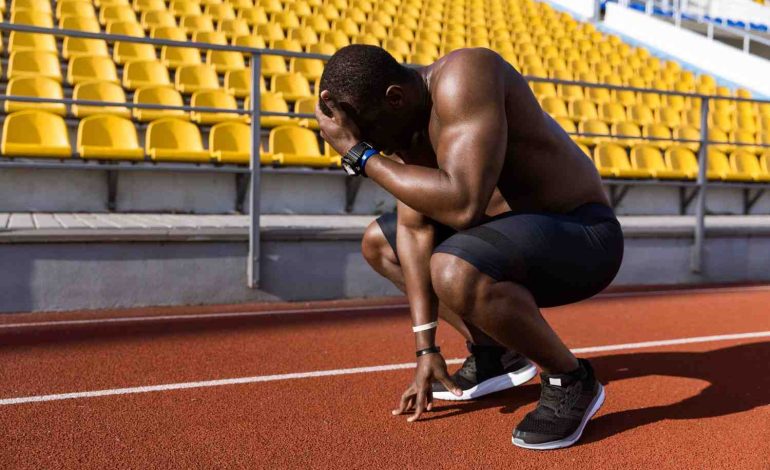
Best Trail Running Shoes: Find Your Perfect Pair for Every Trail
Finding the best trail running shoes can completely transform your running experience. The right shoe also keeps your feet out of harm’s way of sharp rocks and slick falls, and it also allows you to concentrate on the trail, but not the footwear.
Whether you are a novice trail runner trying the local trails or an experienced ultra-runner, this guide discusses the key factors that turn a trail shoe into a great one, how to pair it with your terrain, and how to find a pair that feels like your first mile.
What Makes a Trail Shoe Great?
A trail running shoe is an outstanding product because it balances four key characteristics:
- Traction: Intense, deep treads offer some grip on dirt, mud and slick rock.
- Protection: Uppers, toe reinforcements and rock plates protect against sharp hits and puncture.
- Fit & Comfort: A snug heel and mid-foot, combined with a spacious toe box, will help prevent blisters and black toenails.
- Durability & Performance: Tough materials that can withstand but not break abrasive trails without affecting the comfort or speed.
Key Features to Evaluate
1. Traction and Outsole
- Deep and widely spaced lugs: Ideal for muddy or soft, technical courses – they provide good grip and shed mud easily.
- Shallow, multi-directional lugs: these are best suited to mixed terrain, they have quicker changes and smoother turns.
- Rubber compound: The rubber compound is sticky and easy to cover the wet surfaces, but might be more easily worn out on rough surfaces.
2. Protection and Stability
- Rock plates: Protection against sharp rocks and minimisation of damage to the soles.
- Varnished toe caps: Stubbing and tearing.
- Supportive structure: The uneven surface is improved with a broader base or inner shank.
3. Cushioning and Stack Height
- Low stack / firm mid sole: Responsive, quick action – excellent on short, technical trails.
- Medium cushioning: Supreme generalist in day-to-day trail running.
- High stack / plush foam: Long-distance and ultra running maximum comfort.
4. Fit and Toe Box
- Heel lock: This technique involves holding your foot firmly in place on ascents and descents.
- Large toe box: Downhill comfort- Downhill- Developed to reduce toenail bruising.
- Brand-specific shapes: Fit: This is by always reading guides before purchasing or by trying it in-store.
5. Weight and Responsiveness
- Lightweight models: prefer speed over protection.
- Heavy models provide endurance support and cushions, making them suitable for endurance running.
6. Water Protection or Breathability
- Waterproof (Gore-Tex, eVent): The best when it is wet or cold but gets hot in summer.
- Mesh tops: Breathable and fast dry-cleanable- mesh tops are ideal in wet or warm weather.
- Wear Your Shoes According to the Environment.
Technical & Rocky Trails
Options: Stiff midsole, rock plate, aggressive lugs.
Why: Provides security, grip and stability in rough and hard ground.
Mixed / Forest Singletrack
Select: Medium cushioning, composite lugs, reinforced toe.
Why: Multi-purpose comfort over the most varied surfaces and terrain.
Muddy & Wet Conditions
Selection: deep, self-cleaning lugs with sticky rubber.
Why: Maintains grip and cleans mud well.
Long Distances & Ultras
Option: Plush padding, broad base, long-lasting sole.
Why: Reduces fatigue and the impact on joints during long-distance runs.
Fast / Trail Racing
Option: Lightweight, light-responsive sole, accurate fit.
Why: Maximises speed and agility and does not drop.
How to Choose the Right Trail Running Shoes
- Determine your primary terrain: rocky, mixed, muddy or long-distance.
- Choose the priority comfort, protection, speed or durability.
- You can measure the feet (they are a little bigger later in the day).
- Test using your trail socks to make sure they fit really well.
- The distance at the toe had to be a thumb width to allow downhill running.
- When shopping online, be sure to read the sizing information and check for easy return policies.
Break-In, Care, and Lifespan Advice
- Break in gradually: During the initial stages, make use of new shoes in short runs.
- Wash: Fill a soft brush with cold water and wash off mud.
- Air dry naturally: Avoid using direct heat; instead, use paper to hasten the drying process.
- Rotate pairs: Pairs should rest between runs.
- Change upon 300-600 miles (500-1000 km): Observations include midsoles that are compressed or treads that are worn out.
Common Mistakes to Avoid
- Wearing road shoes on rocky hiking paths – not very good grip and protection.
- Preferring style to purpose — fit and local design are the most important.
- In hot weather, wearing of waterproof shoes may cause blisters.
- Careless about signs of wear – worn shoes increase risks of injury.
Quick Shopping Tips
- If you have any doubts, choose a mid-cushion, all-purpose car model.
- To provide variety, alternate a protective pair with a light and fast pair.
- Always make time to visit a running shop with a specialty gait and fit department.
Trail running shoes are a perfect fit between your feet, the trail, and your objectives. Finding shoes that fit and feel comfortable should be your top priority – terrific traction and protection will mean nothing if your shoes do not fit well.
When you discover your perfect couple, you will make longer, less risky, and more confident steps on any path.
Lace up and hit the trails, your next adventure awaits!




